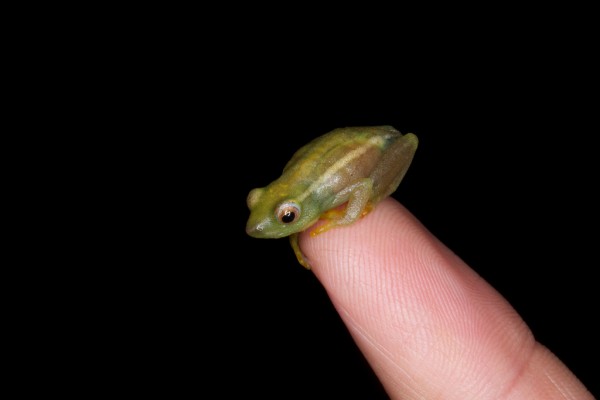This Valentine’s Day we asked some of the rescue project’s researchers why they love frogs. Here’s what we got back from a few biologists at the Smithsonian’s National Zoo. The common link? A life-long love of wildlife.
“My favorite childhood memories revolve around my mother taking me down to the nearest stream and letting me get dirty playing with frogs and salamanders. I loved it so much, I get to do that for a living now! The diversity within all amphibians still amazes me as there is so much we still have to learn. I consider being able to work on projects, which may help save frogs from extinction, to be the absolute coolest part of my job.”
“Since childhood it was snakes, not frogs, that were the focus of hours spent searching woodlands, streams and ponds. Unlike other more noticeable creatures, snakes are decidedly unapparent; unless they happen to be eating a frog! Although, the thrill of finding a snake by following the plaintive screams of a leopard frog never diminished, what increased was my interest in the gradually disappearing prey. So, thanks in part to the appetite of a few alluring garter snakes the equally marvelous world of frogs, toads, salamanders, sirens, and hellbenders opened to me and now inform and enhance days at work and in the field.”
“I fell in love with frogs growing up as a child in Zimbabwe. There was something exhilarating about discovering the translucent, musical jewels that are responsible for the familiar nocturnal soundtrack of my childhood. Unlike any computer games or TV shows, I will carry those first memories of catching frogs around a pond with me for the rest of my life. For me, seeing frogs in the wild stirs emotions of wonder and discovery, and they are accessible to everyone who is willing to take a little extra effort to open their eyes and look.”
–Brian Gratwicke, rescue project international coordinator



